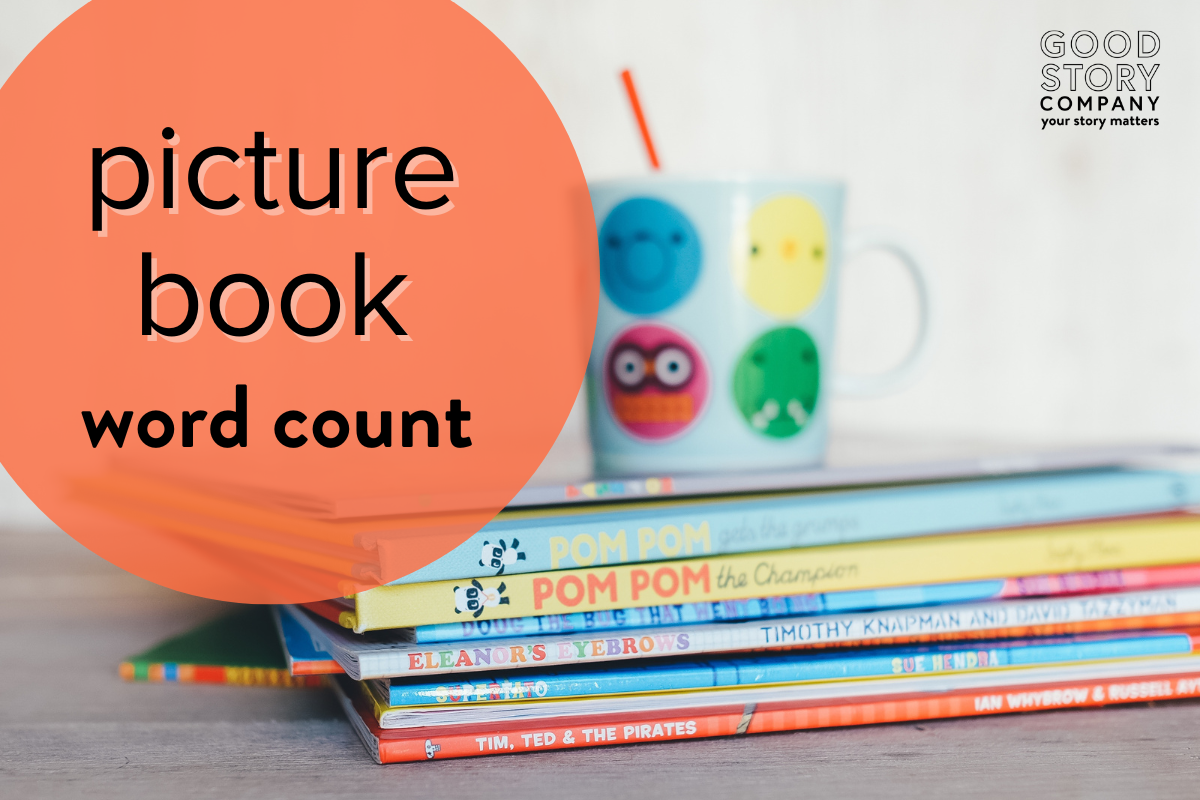Picture Book Word Count
We get a lot of questions over at Good Story Editing about picture book word count. How long can a picture book manuscript be? What if mine’s much longer? Or much shorter? Will I be automatically rejected by a literary agent? What if my story needs those words? Are there different lengths for different types of picture book manuscripts?
Here are some answers to the questions I’m asked most often about picture book word count.
Does your picture book word count make sense for its category? Let’s find out.
Want even more Good Story Company content? Become a member! Get access to tips, workshops, handouts, resources and videos for writers of all levels—all for less than your Netflix subscription.
Board Book Word Count
Board books tend to have very low word counts, many under 50 words. 100 words is about the max for board books. However, it’s a tough market to break into as an unknown author. If you have a killer board book manuscript, it might be worth saving it to show your agent and editor after you sell a picture book.
Picture Book Word Count
The most important numbers to look at with picture book length are for those stories that are selling right now. Current market trends are for shorter and shorter manuscripts, targeting younger readers. So even though you grew up reading The Cat in the Hat (word count: 1621) and Curious George Gets a Medal (word count: 1807), or you read your own children Blueberries for Sal (word count: 1042) and Strega Nona (word count: 1253), your own thousand-plus-word manuscript might not sell.
A strong place to debut right now in picture book is under 600 words. One of my friends recently sold a picture book, and her editor said the deciding factor when it went to acquisitions was that it was under 500 words (barely!). 700 words is probably the upper limit.
Nonfiction Picture Book Word Count
There is a bit more wiggle room with nonfiction picture books. They can sometimes be as long as 1000 words. Since nonfiction picture books are often used in classrooms for school-aged children for educational purposes rather than just storytelling, they can use a few more words.
WHAT IF I HATE THIS INFORMATION?
Now. Don’t despair. I know that five or six hundred words doesn’t sound like much. Honestly—it’s not. And you don’t necessarily need to worry about it in the first-draft stage. Long initial drafts are okay, and they’re sometimes necessary to figure out what the story is that you want to tell. They came up with something like eighteen hours worth of footage for the first Lord of the Rings movie. The director finally decided that it was Frodo’s story, and everything else had to be cut. You’ll probably have to make some tough decisions, too, as you whittle a bloated word count down to the core of the story.
Remember that you will eventually have an illustrator who will tell a portion of the story, as well. So it’s easy to trim things like, “He was wearing a red coat” or “She turned her head and narrowed her eyes.” Those kinds of visual cues, along with lots of world-building and ambiance, can be shown in the illustrations. Just remembering that can help you delete, delete, delete.
Trim on the scene level. Look at the beginning, especially. There’s often a lot of throat-clearing and introduction in rough drafts that can be cut down. For instance, maybe you envisioned your story about a fire-breathing cat starting with the cat’s adoption and learning about its powers and origin story, but maybe we can just say, “Flames the cat breathes fire” and jump into the adventure.
Flames the Fire-Breathing Cat!
Cutting Down PICTURE BOOK WORD COUNT
Trim on the sentence level and the word level. Are there “to be” verbs bogging things down, or several sentences to express one idea? As an exercise, consider going through every line, one by one, to see if the ideas could be expressed in fewer words. Then read the whole thing out loud and see what you think. Some lines will lose verve and voice when they’re condensed, but others will improve the pacing and tighten up the prose.
If your word count is too low, that might mean that there’s not enough meat to the story. If the whole story about Flames is that he breathes fire and kids are scared of him … that might not be enough for 500 words! But maybe he lives at a summer camp and tries to befriend kids, first by roasting (burning) marshmallows, then by heating up the cold pool water (and making it boil), and finally by lighting campfires on a rainy night when matches won’t catch. Adding more story, rather than fluffing up a word count with description or filler words, is usually the solution to a low picture book word count.
People often think writing children’s picture books must be easy since they’re short. But they can be very tricky to craft, because they still need a compelling character, a problem, choices, setbacks, and triumph, all in a few hundred words.
If you want some one-on-one help with your picture book word count—and your manuscript, you can book a picture book edit here. This post contains affiliate links. Happy writing!


